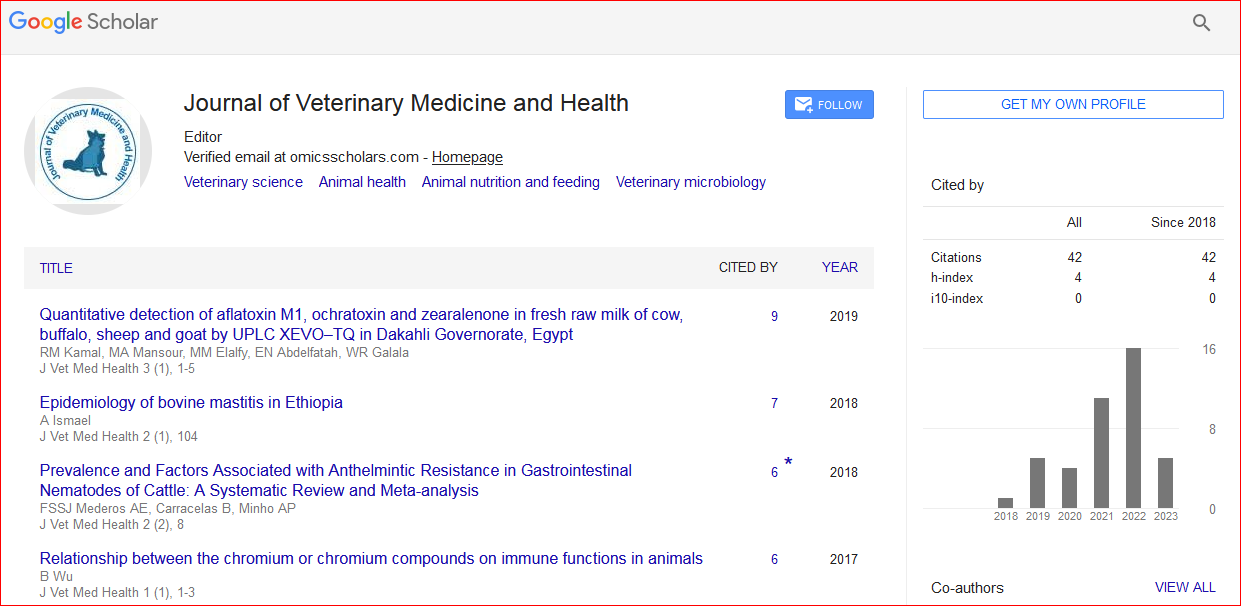Bacterial Bovine Mastitis and Formation of Specific antibodies in Milk and Sera, Sudan
*Corresponding Author: Salih RR, Department of Clinical Medicine, Faculty of Veterinary Medicine, University of Khartoum, Sudan, Tel: +0024991138823, Email: reemat7@yahoo.comReceived Date: Feb 23, 2019 / Accepted Date: Mar 12, 2019 / Published Date: Mar 19, 2019
Citation: Suliman RM, Salih RR (2019) Bacterial Bovine Mastitis and Formation of Specific antibodies in Milk and Sera, Sudan. J Vet Med Health 3:113.
Copyright: © 2019 Suliman RM, et al. This is an open-access article distributed under the terms of the Creative Commons Attribution License, which permits unrestricted use, distribution, and reproduction in any medium, provided the original author and source are credited.
Abstract
The aim of the study to isolate and identify the bacteria which can cause mastitis in cows and the antibodies forming during the infection by these bacteria and appear in milk and serum. A total of 50 samples of milk were collected from all quarters of each cow and sera were collected from cows with clinical and subclinical mastitis in two different farms in Khartoum. The bacteria were isolated from 38 (76%) of the milk samples and the total number of isolates was 45. Sixteen (36%) bacterial isolates were obtained from cows with clinical mastitis, whereas 29 (64%) were obtained from cows with sub-clinical mastitis. Mixed infection was detected in 10 (20%) of the milk samples. Both Gram positive and Gram negative bacteria were isolated and identified to the species level, using cultural characteristics and biochemical tests. Most isolates were Staphylococcus species, other gram positive bacteria isolates: 1: Streptococcus agalactiae, 3 species from Enterococcus (avium, mundtii and faecium), 2: Listeria Ivanovii, 3: Bacillus species (two Bacillus licheniformis and one B. mycoides) and 3 strains of Corynebacterium pseudotuberculosis. The gram negative bacterial isolates: three Enterobacteria species (2: Citrobacter freundii and 1: Klebsiella pneumoniae and Pseudomonas aeruginosa consisted two strains. Only Bacillus mycoides gave clear precipitation lines with both milk immunoglobulin fraction and serum. Other bacteria gave precipitation lines with serum antibodies alone. The results revealed that the Gram positive bacteria, especially Staphylococcus species, were the common causative agent of bovine mastitis; the number of cows with subclinical mastitis was higher than cows with clinical mastitis. The bacteria associated with bovine mastitis can induce local and systemic specific antibodies response as measured by agar gel immuno-diffusion test.

 Spanish
Spanish  Chinese
Chinese  Russian
Russian  German
German  French
French  Japanese
Japanese  Portuguese
Portuguese  Hindi
Hindi 